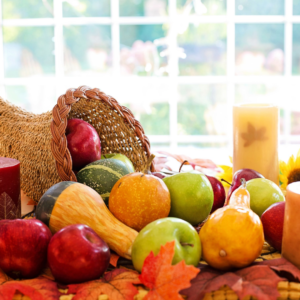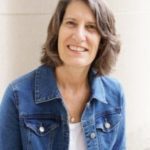 I begin with apology for all I didn’t know.
I begin with apology for all I didn’t know.
I didn’t know that European traders, three years before the Pilgrims, brought yellow fever to the local native people, the Wampanoag, which reduced their numbers by two-thirds. Over 45,000 died, mostly children and the elders.
I didn’t know that the Pilgrims, fresh off the Mayflower and hungry, raided Wampanaog storage bins on the beaches, leaving the native people without corn for the winter.
I didn’t know of the Wampanoag’s reluctance to join the Thanksgiving feast (in fact, they weren’t even invited) or that in the years to follow, hundreds of thousands were slaughtered by white settlers. Those who survived were stripped of their land and their culture and sent to the Carlisle Indian School in Pennsylvania, a town where I’ve spent many an enjoyable evening, so they could learn to be white and Christian, neither of which they wanted or needed.
I didn’t know the real story of Squanto, whose name was Tisquantum: he was captured by white settlers in the early 1600s because his captors thought European financiers might like to see some natives. Later he was sent to Spain as a slave. He escaped and returned to Plymouth where, because he knew English, he reluctantly agreed to serve as interpreter between the Pilgrims and the Wampanoag.
I didn’t even know the name of the people—the Wampanoag—until just a few weeks ago.
“How do you white people not know these things?” my friend Jacki-Lynn asks.
Because I wasn’t taught it. As a child, I did what most schoolchildren have done for generations: I wore my construction paper bonnet and white collar and listened to stories about the First Thanksgiving. I put on my brown paper sack dress and a headband with a construction paper feather around my head.
Because I didn’t take the initiative to learn it myself. And why would I? Our culture pretties up ugly stories. We white people don’t want to discuss racism because we might feel bad about our past, and we don’t want our children to feel bad about themselves and their ancestors. We watch Charlie Brown specials and Thanksgiving pageants, and we believe what we’re told, ignoring the near-decimation of an entire culture of people.
I came to love Thanksgiving. I love the brilliant oranges, reds, browns, and yellows of the season. I love my memories of making acorn wreaths, ironing leaves between wax paper to spread across the feast table, watching the Macy’s parade. I love the holiday’s simple intent: to share a meal—a communion of sorts—with family and friends. I love when those around the table—especially children—hold hands and say what they are thankful for.
But something is wrong with the day, and, sadly, there are no easy answers.
“We don’t acknowledge the American holiday of Thanksgiving. It’s a marginalization and mistelling of our story,” Paula Peters, a Mashpee Wampanoag told Dana Hedgpeth of the “Washington Post.” Hedgpeth is a member of the Haliwa-Saponi tribe in North Carolina.
Darius Coombs, Mashpee Wampanoag cultural outreach coordinator, also in the “Washington Post” article, agreed. “For us, Thanksgiving kicked off colonization,” he said. “Our lives changed dramatically. It brought disease, servitude and so many things that weren’t good for Wampanoags and other Indigenous cultures.”
I have a grandson now, and I want him to learn the true story of Thanksgiving and its aftermath. Maybe he’s what drives my desire to reach my own personal reconciliation with the holiday. I’ve talked with teachers in local schools and with parents across the state. What I’ve learned is that things are changing. The pilgrim hats and construction paper headbands are being replaced by lessons of daily life of the Wampanoag and cultural dioramas of native villages.
But at what age do we teach children about genocide? Maybe from the beginning.
The more I learn about the history of the Wampanoag, the more I realize that our observance of the Thanksgiving holiday is not just wrong, it’s really messed up.
But what’s the answer? Is teaching Native American culture the way to undo the wrong? If children study culture alone, I’d say no. They must learn the harsh reality of the destruction of an entire people, who, in 2021, continue in their struggle. It’s not enough to pause on one day each year and say that all was well and good because people sat down and ate together. History tells us that even that day was fraught with tension.
Do we delete the holiday from our national calendar? We might do well to delete Columbus Day, which has no purpose other than to close banks, pause mail delivery, and honor a man who doesn’t deserve to be honored. But Thanksgiving is far more complicated.
Why? Because it’s also about giving thanks. It’s about gratitude, family, love, and all that. Yes, there are squabbles and political divides that can accelerate, but in its best clothes, Thanksgiving offers a chance for healing.
And we need that. More and more these days, we need that.
But can we honor our need for gratitude and ignore the history that brought this day into being? Can we perpetuate the lies that our popular media continue to sell?
We have to begin with individual choices. I’ve removed Mr. and Mrs. Pilgrim from my Thanksgiving table, which saddens me, because they’re wooden, hand-carved, and I’ve always liked them. I will tell my grandson about the Wampanoag when he grows old enough to understand my words.
And I will be thankful. Because I am.
I still have much to learn, but I’m not clueless anymore. I apologize for all I did not know. I apologize—for the small grain that it’s worth—for what my ancestors have done. I’ll do everything I can to educate others. I’ll start by telling the story.
 Barbara Presnell lives and writes in Lexington, NC.
Barbara Presnell lives and writes in Lexington, NC.

There are no comments
Add yours